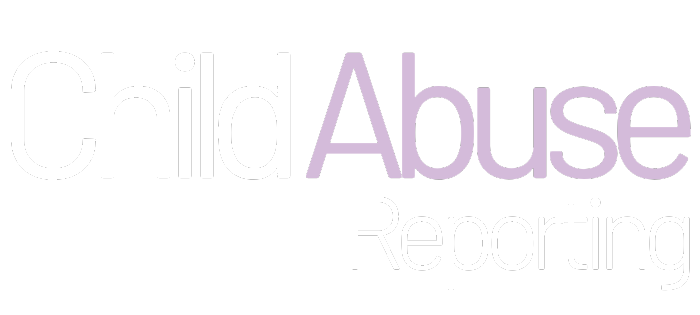style=”width: 650px; text-align: left;”>
COVID-19’s Impact on Kids with Disabilities: Clear the Barriers to Learning
COVID-19 has changed how we live and work—and learn. At some point over the past year, we have all lamented its disruption to at least one aspect of our lives.
Now imagine being a child with a disability, who already endures daily struggles. We may grapple with enabling our microphones or cameras on Zoom meetings, or complain that wearing a mask is annoying, even restrictive. Rebecca Sprague’s six-year-old son, Lincoln, a student at Fairport schools was born with unilateral hearing loss. The pandemic reliance on remote technology and mask wearing have presented additional barriers to his learning.
“Wednesday is virtual day,” said Sprague, “when the whole class is on a Zoom call. During sharing time, Lincoln struggles with what other kids are saying, with mumbling and background noise.”
In the classroom, students with hearing loss depend on lip reading to fill in the gaps of what they are missing. Cloth masks not only obscure mouths and lips, but they muffle sound and speech. Of course we all need to wear masks to protect ourselves and those around us from the virus. Clear masks are readily available and can make all the difference in Lincoln’s education—and yet, a year into the pandemic, they still have not caught on.
Lincoln is just one of many children with disabilities whose special needs have become secondary casualties of COVID-19.
Mary Cariola Center
Keri Lazenby Neathawk, Principal of the Elmwood School-Age Program at Mary Cariola Center, has seen firsthand how the pandemic has affected the school’s nearly 450 students with disabilities. “The COVID impact has been significant,” she said.
Based in Rochester, the Mary Cariola Center has served the needs of the medically fragile, students with autism, those with cognitive delays, physical disabilities and rare genetic syndromes throughout the Upstate New York region for over 70 years. Mary Cariola Center offers residential services and community outreach programs, as well as a School Program for children ages 3-21.
Neathawk says the switch to remote learning has presented some challenges for her students, especially those with complex needs. “Being out of their routine and not receiving the daily, direct and hands-on instruction and therapy, has led to less effective delivery of services, and in some cases, behavioral concerns and regression of skills.”
Families have taken on many tasks related to remote learning, including completing learning packets with their children, fielding regular phone calls from teachers, clinicians and social workers, and participating in educational and therapy sessions via Zoom.
“Caregivers are working hard to make everything happen,” observes Neathawk, “and we recognize that can be very stressful.”
What Can Be Done?
When schools closed in March of 2020, social workers in Mary Cariola’s School Program began to provide weekly outreach to families. “During a time like this, we never want to assume that ‘no news is good news’”, said Wendy Winston, Social Work Supervisor at Mary Cariola Center.
Winston recommends following up with families you aren’t hearing back from regularly, whether that’s via a phone call, email, letter, or home visit. “We had to be creative and persistent in our outreach at times; but we maintained contact with our students and their families.”
The recommendation is the same from Sprague, but from a parent’s perspective. She said it’s important to periodically check in with kids and watch their expressions—in person and on Zoom—to see if they are engaged.
For Lincoln and other children with hearing loss, it’s important to tune down background noise, repeat what other students have said, and mute anyone not speaking on Zoom. Sprague commended Lincoln’s teachers.
“They approach each problem with a solution, and figure it out.” On her wish list are closed captioning for Zoom and clear masks for everyone, at the very least for teachers.
Neathawk added, “The bright spot or silver lining in the pandemic is that with the frequency of engagement, relationships have improved.”
Resources:
Mary Cariola Center
Mental health implications of COVID-19 on children with disabilities
https://www.ncbi.nlm.nih.gov/pmc/articles/PMC7330593/
Clear face masks:
https://www.goodhousekeeping.com/health/g33471599/best-clear-face-masks/
Hearing Loss Association of America/Rochester Chapter
https://www.hearinglossrochester.org/
Foster Parents Needed
Have you ever considered becoming a foster parent? The need for foster parents is greater than it has ever been, and many mandated reporters have exactly the skills needed to give a kid in foster care the stable and loving home they so desperately need. Will you step up? To learn more, come to an information session. For dates and times, go to MonroeFosterCare.org
Bivona Child Advocacy Center Virtual Child Abuse Summit
Registrations are now open for the Virtual Child Abuse Summit presented by Bivona Child Advocacy Center May 19, 2021 from 8:30 a.m. to 4:30 p.m..
Keynote Speaker: Elizabeth Smart
Professionals encouraged to attend the Summit include social workers, law enforcement, legal professionals, judges, mental health and medical professionals, school personnel, daycare providers, child advocacy center staff, and the faith-based community.
To learn more or register, go here.
Definition:
Reasonable Suspicion:
A reporter may form a reasonable suspicion that child abuse or neglect is occurring when two factors are present: The reporter has information that suggests that a child has been hurt or harmed by a parent/person legally responsible for the child and when another experienced mandated reporter would suspect child abuse or neglect if given the same information.
View all previous newsletters in the archive.

